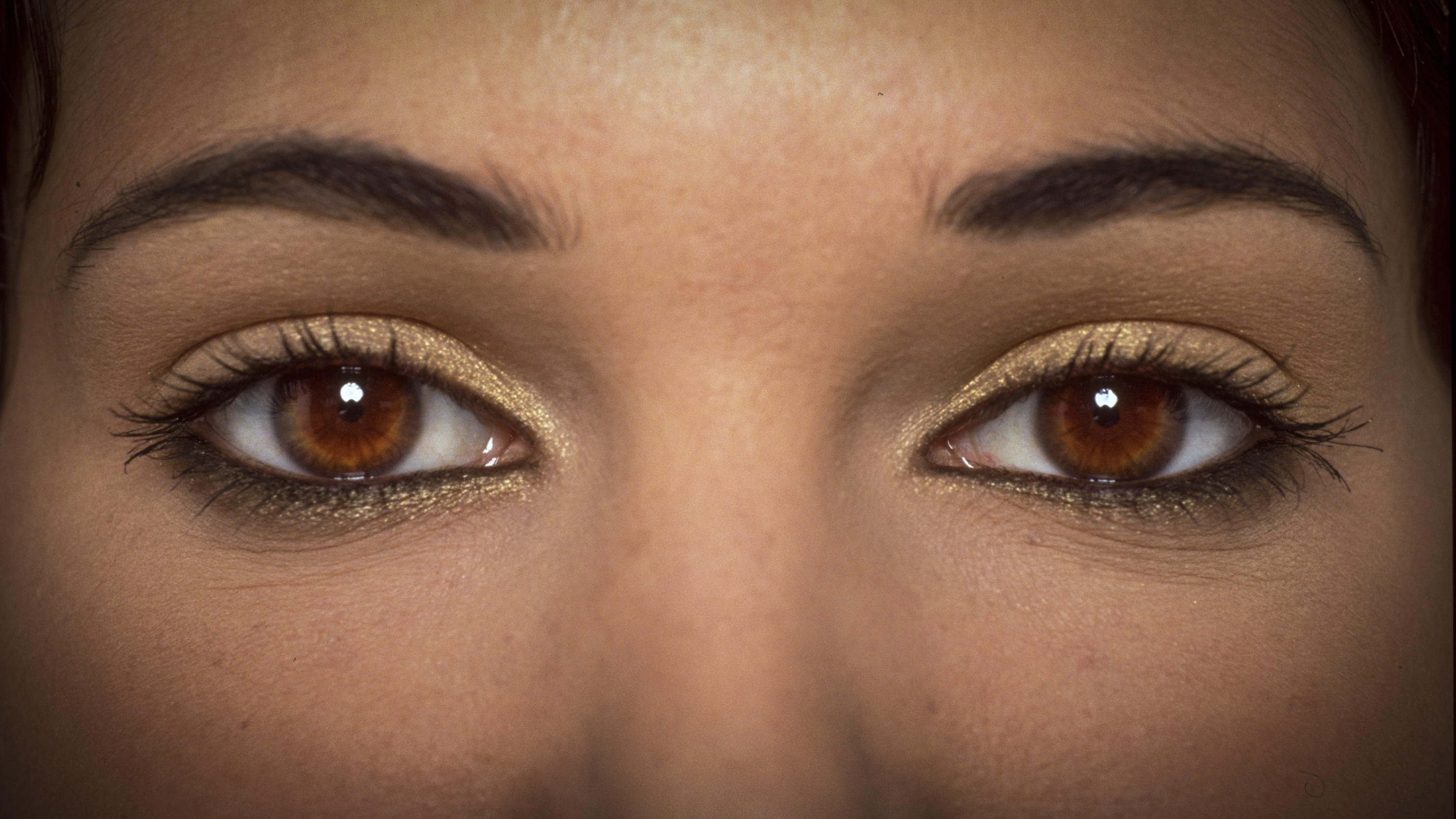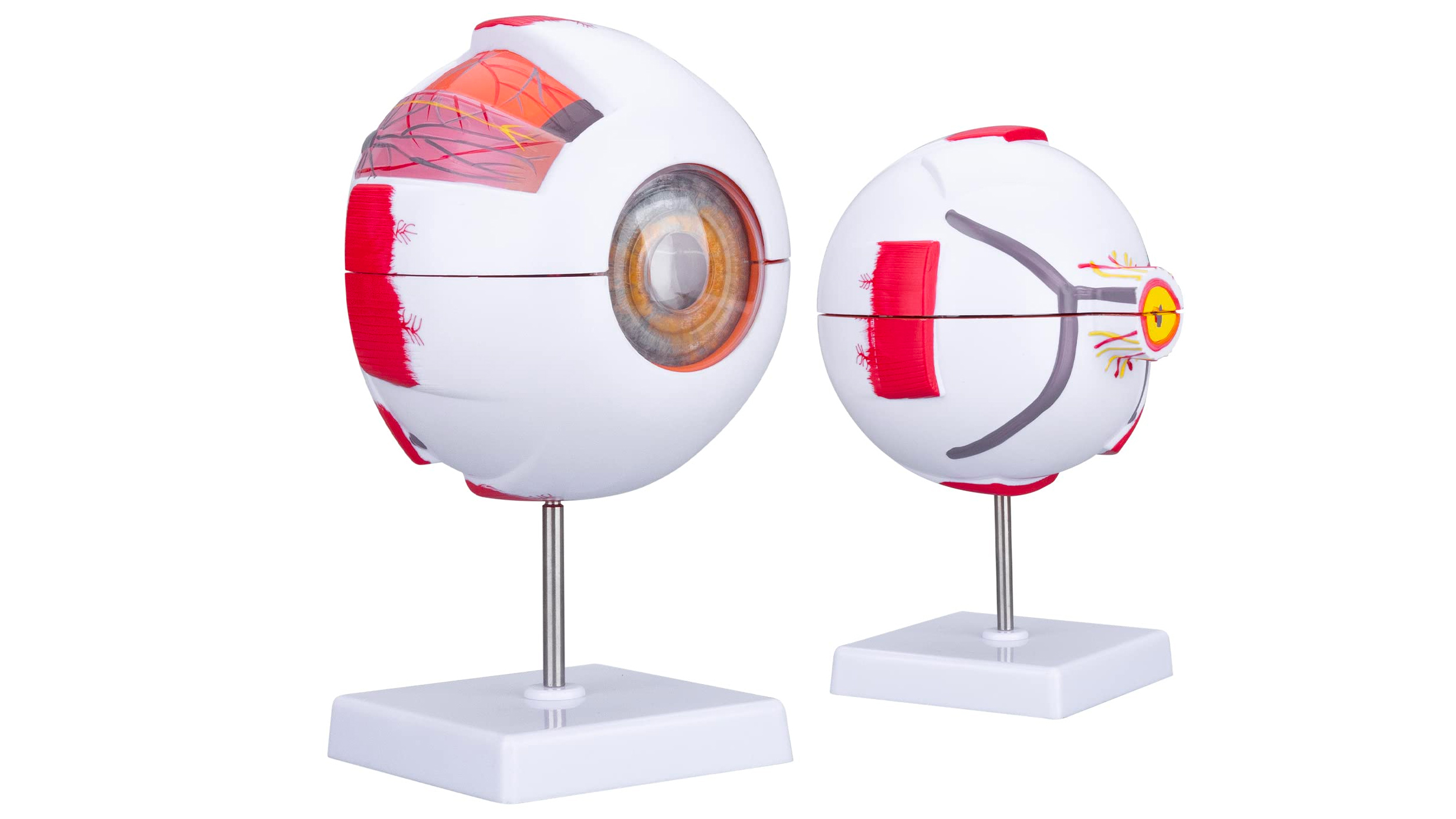Your eyes are around 124 megapixels. Time for an 8K TV?
The resolution of the human eye is 576 megapixels, says one scientist. But it can also be less. Or more…

Resolution is a word so entrenched that we barely even know what it means. That hasn't stopped some from making some pretty big claims about the human eye's resolution, though, so before we get to the big numbers, let's define our terms.
I think it's fair to say that, in the world of photography, resolution has two meanings. We talk about the absolute resolution of an image in terms of the square pixels that make it up: "That photo is 60 megapixels." We also speak of the physical resolution of a display in terms of PPI (pixels per inch): "That is a really high-res display, it is 460PPI." On a display, each pixel might actually be three points of light – red, green, and blue. Print is another matter, because a pattern of ink dots is needed, but we'll leave that discussion aside.
• These are the highest resolution cameras, if you want to maximise your hi-res eyes!
Anyway, to the eye. If we're looking for the eye's resolution, do we think of the image that a static eye can see, or the entire field of view? The eye, after all, 'resolves' an image using motion. Eyes are not actually especially acute in their detail across the whole field of view, but they move a lot. Most photoreceptors – the cells equivalent to a photosite on a CMOS sensor – are in the fovea centralis (or fovea, for short). While the eye's macula (image sensor) is 5.5mm in diameter, the fovea is just 0.35mm according to the National Library of Medicine.
Eyes build an image using 'rod' and 'cone' cells (the light-sensitive cells), and the fovea boasts around 50 cones per 100 square micrometer. Calculating for a circle, that's around 4.8 million distinctly biological photosites (or 'pixels'). This dense spot is the group that your eye moves over words as it reads, to get the sharpest detail.
That's just the middle, though. What about peripheral vision? It's likely obvious to you, as a user, that peripheral vision isn't quite so sharp, but it does have other abilities. The rods – which aren't in the fovea – are more sensitive, making them quicker to respond and better able to handle a wider range of brightness. Plus there are about 120 million of them (though they can't detect much by way of hue, especially red, according to SJ Williamson and HZ Cummins' 1983 book).
Okay, so 125MP give or take?
Wouldn't that be easy? It does fall down a bit because, as we said, the eyes can – and do – move. Even if you just took the area of the peripheral vision and imagined the fovea popping to any place there on its detail-gathering journey, you're looking at well over two billion pixels. We can't, of course, because things move. Perhaps even ourselves. And we start to forget the detail from the previous eye position, though we do retain important information further along the processing channels of our mind.
The best camera deals, reviews, product advice, and unmissable photography news, direct to your inbox!
Also, we're still treating each photoreceptor as a pixel. That's not the full level of 'processing' that an eye is required to do. It, after all, needs to make sense of the different wavelengths of light that each rod / cone receives, in the same way, cameras can downsample and eliminate noise.
But I read that human eyes have a resolution of 576MP?
This is a commonly quoted number, and this is where the logic comes in. Instead of thinking in terms of the biological components of the eye, it is easier to measure perception – what can you actually make out. Less dissection is involved, too, which is nice.
Scientist HR Blackwell's 1946 data – much quoted by astronomer / photographer Roger N Clark – suggests that 0.7 arcminutes can be resolved by the eye. So, now we need to understand arcminutes. Get out your protractors! One arcminute is 1/60 minute of a turn, of which there are 360 in a full turn. So there are 21,600 in a full turn.
Taking the field of view as being 130 degrees square, we're looking at ((1/0.7)*(60*130))^2 = 124 megapixels. Which, actually, is amazingly similar to the previous figure. Clark would point out, of course, that you need to at least double the number of pixels in both directions by halving the arc, which runs us up to 497 megapixels, similar to Clark's figure of 576.
This chimes with the advice that you won't see individual pixels of the best 4K monitors once you're 1.5x the screen height size away.
And close-up?
The human eye is happiest focussing at 25cm or further away, and struggles to focus on something smaller than 0.1mm even when closer – this is another aspect of resolution that is probably best considered in our guide to the best microscopes.
Eyes do not have a resolution
When we reported on a series of studies that suggested the human eye worked at about 10Hz it seemed to irk more than one of our readers, not least those reading on gleaming new 144Hz gaming monitors.
Our point, though, was not to suggest that it was impossible to perceive faster movement, but that we don't always look at things in the correct terms. The real point was that the eye doesn't have a refresh rate. It is not closed as much as it is open, like a projector, for example. Biology and technology aren't the same, and we can get into a very silly place when we start repeatedly thinking that way.
It's also worth remembering that our brain is smart enough to understand the limitations of display tech and to tune it out. The more you think about it, the more it will bug you!
If you enjoyed this article, you might be interested in reading about the Canon EOS R3 – a camera that possesses Eye Control AF, which moves focus points by tracking the movement of your eyeball. If you're feeling creative, you may also like to read about worm's eye view photography or the best fisheye lenses.

With over 20 years of expertise as a tech journalist, Adam brings a wealth of knowledge across a vast number of product categories, including timelapse cameras, home security cameras, NVR cameras, photography books, webcams, 3D printers and 3D scanners, borescopes, radar detectors… and, above all, drones.
Adam is our resident expert on all aspects of camera drones and drone photography, from buying guides on the best choices for aerial photographers of all ability levels to the latest rules and regulations on piloting drones.
He is the author of a number of books including The Complete Guide to Drones, The Smart Smart Home Handbook, 101 Tips for DSLR Video and The Drone Pilot's Handbook.

